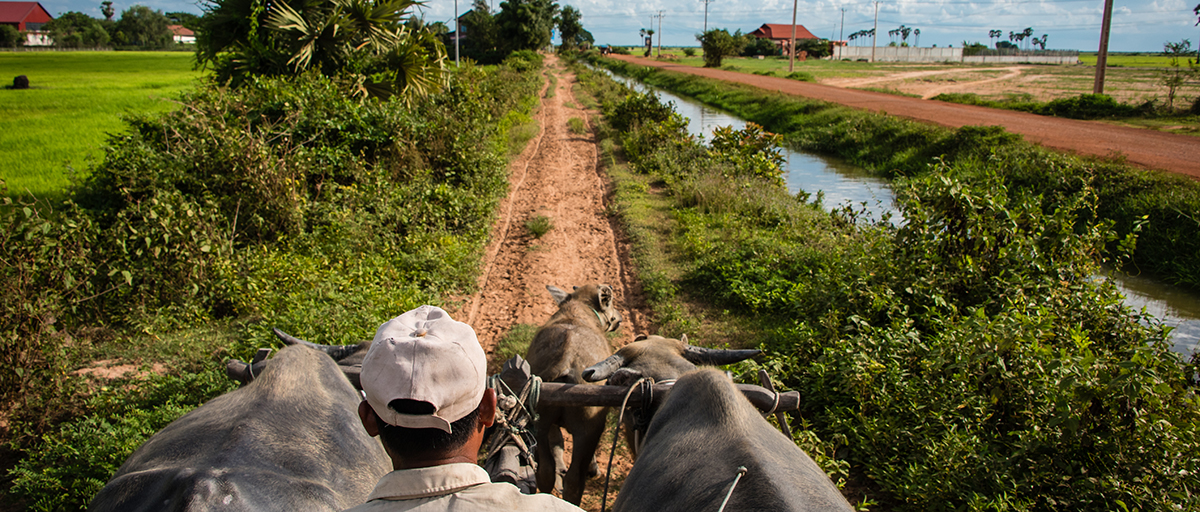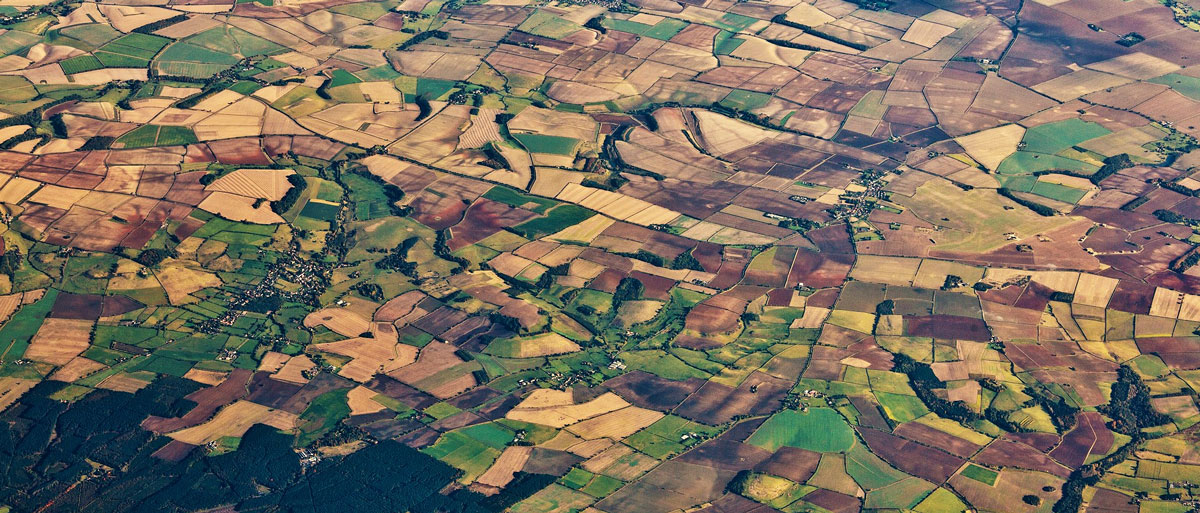Bildtext får vara max två rader text. Hela texten ska högerjusteras om den bara ska innehålla fotobyline! Photo: B. Christensen/Azote
Sustainable food
Eight ways to rewire the world's food system
The starting point for a rethink on how we produce our food
- Between 1960s and today the total volume of food globally has increased, undernutrition has halved, but overweight has doubled
- This led to reduced biosphere resilience, pushing four of six planetary boundaries above the safe operating space
- Consumers and producers have become more distant from one another, with substantial power consolidated within small group of key actors
- 'Rewired' food system should reconnect producers and consumers to the biosphere while also enhancing the transparency between them
Nourish the biosphere so it can nourish your body - that is the idea of becoming a biosphere steward through food. Over the last decades, major changes to food systems all around the earth have impacted human health and the state of the environment. Although more food is now produced to feed a growing population, our plates are filled unequally and the nutrition and safety is not always guaranteed. That has led to a growing number of malnourished (especially overweight, obese and lack of micronutrients) people and a strain on our planet. Food production is the single largest driver of environmental degradation and a major contributor to greenhouse gas emissions.
It's time rethink this.
In a recent study published in Environmental Research Letters, centre deputy director Line Gordon and thirteen other colleagues from the centre, the Global Economic Dynamics and the Biosphere Program at the Royal Academy of Sciences in Sweden, University of Gävle and the WorldFish Center in Malaysia, teamed up to identify ways the global food system can be ‘rewired’. To do that they looked at how food production has influenced human health and the biosphere since the 1960’s until today.
Humanity relies upon the biosphere to provide resilient life-support systems that foster societal development and human wellbeing. However, as a society, we are reshaping the biosphere in ways that are undermining this central capacity
Carl Folke, co-author
Mixed implications for human and environmental health
In their study, the authors look at how the total volume of food production has changed along with the nutritional value of the food. They also looked at safety aspects of food production and how farming and fishing have affected crucial earth system processes. The latter part of the study uses the planetary boundaries framework.
The authors argue that the overall increase in the volume of food production has mixed implications for human and environmental health. Less people are undernourished today than in the 1960’s and more variable and convenient food choices are available, but the proportion of overweight and obese people has increased. At the same time, four out of the six planetary boundaries have crossed a safe operating space.
Moreover, a more globalised food system has disconnected consumers from the producers of food. This in turn has reduced the transparency of how food is produced.
"Throughout the past decades, supply chains have become consolidated to a few actors that exert disproportionate power over the production methods and the supply of food at a large scale, constraining individual food choices at the local scale," says co-author Beatrice Crona.
Eight action points
Gordon and her co-authors identify eight “entry points” for a more healthy and sustainable food system:
1. Create nutrient-rich landscapes:
This includes selecting crop varieties, fish and livestock based on their nutritional content. To strengthen this, new metrics are being developed that account for the nutritional yields of crops and production systems, which are similar to nutritional facts labels, but adapted for production units.
2. Cut waste and change diets:
Solutions such as cutting post-harvest losses and shifting dietary patterns can reduce pressure on natural resources. More resource efficient estimates have shown that we could potentially provide enough calories to meet the basic needs of an additional four billion people if the current crop production used for animal feed and other non-food uses (including biofuels) were targeted for direct consumption.
3. Reduce antimicrobial use:
Intensification is a general trend in animal farming and it is urgent to find means that limit excessive use within the animal food production sector.
4. Strengthen biodiversity and multifuntional landscapes:
We should better acknowledge and account for the many ecosystem services and social benefits that food producing systems deliver beyond food itself, such as pollination, water filtration, and recreation.
5. Reconnect people to the biosphere:
The disconnect between the food production system and consumers calls for initiatives that can reconnect individuals and communities to food, facilitating a broader engagement with food systems in healthy and sustainable ways.
6. Enhance transparency between producers and consumers:
There is a need to improve our capacity to trace the impacts of food production across the supply chain. Third-party certifications, product standards, and ecolabelling are important but trust is still a concern and we cannot overly rely on certifications or similar wallet cards.
7. Influence consumer decisions:
Although there is accumulating evidence on what constitutes healthy and sustainable dietary patterns, we urgently need better knowledge about what enables people to adopt these.
8. Mobilize key actors to become biosphere stewards:
Even though these actors have the power to create strong incentives for local action to reconnect development to the biosphere, they are sometimes unaware of their own potential to foster positive change.
Based on these action points, the authors conclude, “We need to rewire different parts of food systems, to enhance information flows between consumers and producers at different scales, influence food-system decision makers, foster the biosphere stewardship of key actors in food systems, and re-connect people to the biosphere through the culture of food.”

The food system and its impact on health and the biosphere comparing 1961 (a) and today (b). For each sub-system, negative impacts are illustrated as a contrasting colour radiating outwards. The health and food systems have grown in size indicating a larger population (health) and overall volume of food produced (food system). We are today producing enough volume per capita to feed the global population, which we did not in 1960 (grey colour wedge), but we still have problems of similar magnitude with nutrition and safety (grey). Health demonstrates that we have gone from 19% to 11% of the world population being undernourisheda and from 23% to 39% being overweightb (orange). Click on illustration to access article
Gordon, L., Bignet, V., Crona, B. et.al. 2017. Rewiring food systems to enhance human health and biosphere stewardship. Environ. Res. Lett. 12 100201
Line Gordon is the deputy director, deputy science director, and an assistant professor. Her research focuses on freshwater resources, ecosystem services and food production.
Victoria Bignet is a PhD student on sustainable and healthy diets. She holds a MSc. degree with Distinction in Environmental Change & Management from the University of Oxford, from which she graduated in 2013, and a BSc. degree with First Class Honours in Biology from Imperial College London which she obtained in 2011.
Beatrice Crona's work centers on various aspects of oceans and fisheries governance, as well as understanding different emerging global connectivities and their effects on social-ecological outcomes at multiple scales
OTHER CENTRE AUTHORS INVOLVED










